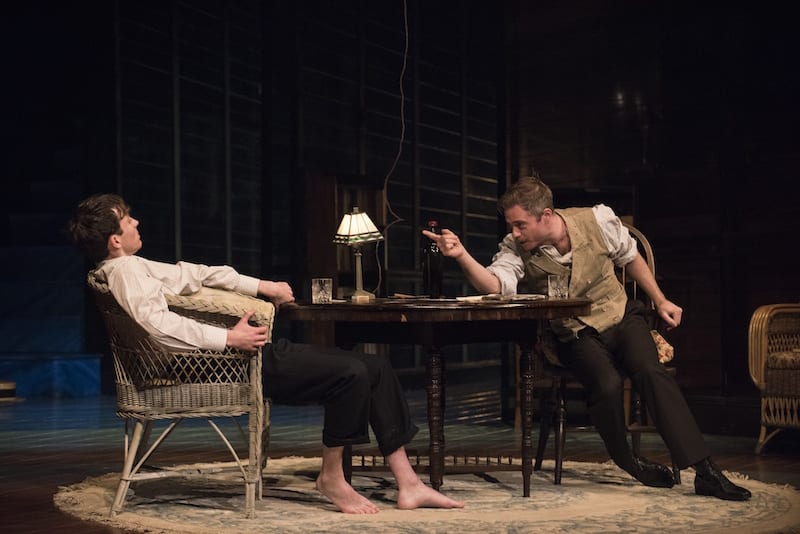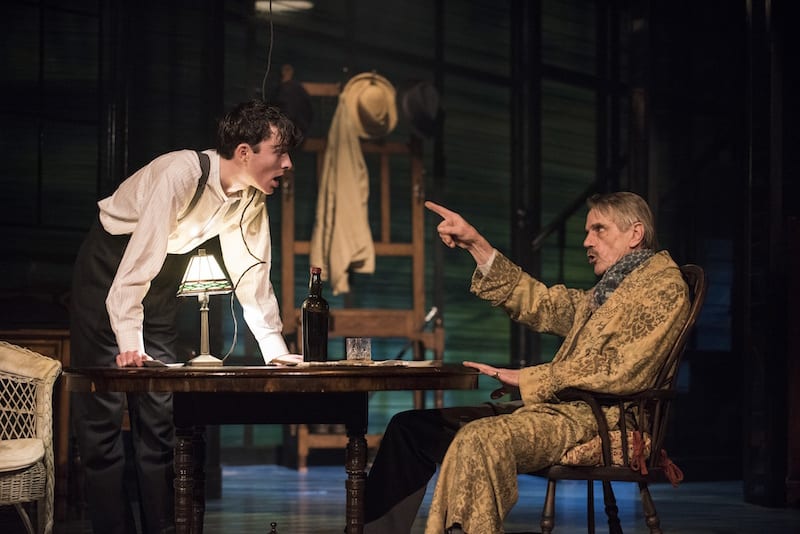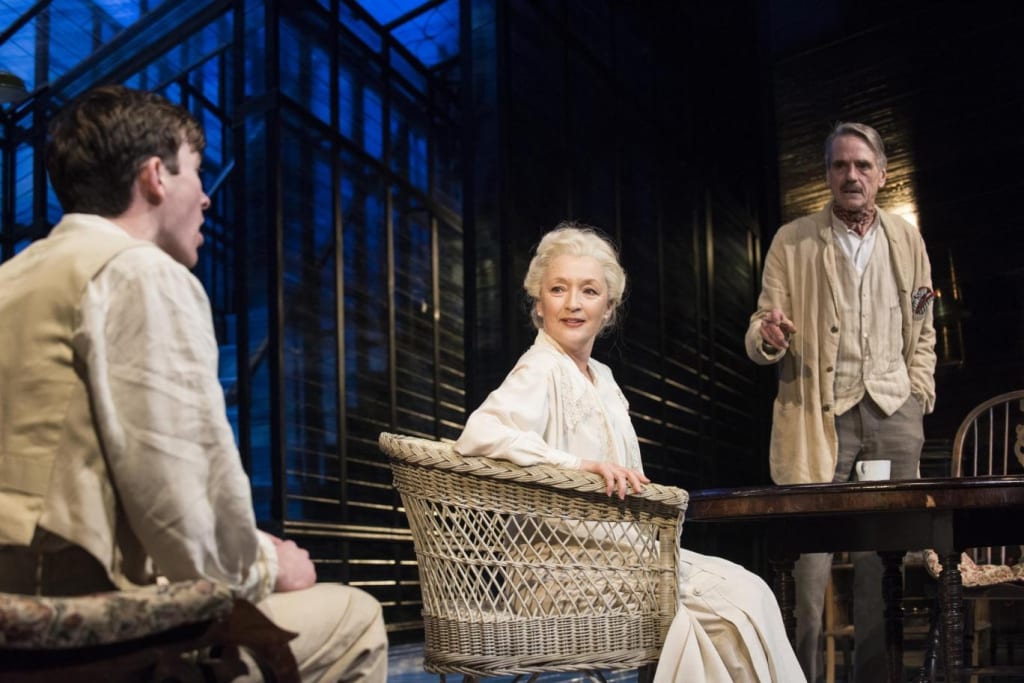I tend to give marathoners a bit of leeway. It’s difficult to begrudge runners a few wobbles in a race that would kill most of us, especially when it’s the course, not the athletes, at fault. So it is with Richard Eyre’s production of Eugene O’Neill’s excoriating family drama, Long Day’s Journey into Night, an emotional marathon if ever there was one. The cast members give Olympic-worthy performances; it’s a pity the race is just too long.
The action focuses on the exceptionally unhappy Tyrone family. When the play opens, James Tyrone (Jeremy Irons), stage actor and local property owner, is enjoying his “first after-breakfast cigar” at his Connecticut summer house. His wife, Mary (Lesley Manville), teases him about his fog horn-like snoring. When the couple’s adult sons, Jamie (Rory Keenan) and Edmund (Matthew Beard) emerge from breakfast, tensions escalate. It soon becomes evident that Mary has recently returned to the family after a hospital stay, and the cause of her incapacitation is the connecting thread in a tapestry of trauma which includes drug addiction, alcoholism, consumption, and poverty. By day’s end, the truths the Tyrones have shared change their lives forever.

O’Neill is a model for the likes of Tennessee Williams in his ability to communicate domestic suffocation via layered and repetitive dialogue. Tyrone harps on the value of a dollar, while Mary’s monologues cycle from offers of maternal comfort to embittered sniping, and back again. Both Irons and Manville are first-rate, infusing their characters’ oft-told tales with emotional urgency. Irons’s famously rough-hewn voice is a perfect fit for Tyrone’s gruff meditations on his sons’ professional failures. Meanwhile, Manville moves deftly between anxiety and languor, vulnerability and recrimination as Mary sinks deeper into addiction.
While the performers maintain their intensity throughout the three-and-a-half-hour work, the play strains the audience’s attention and emotional reserves. The second act, lacking the revelations of the first, and with Manville’s Mary largely absent, contributes little to advance the plot. Eyre acknowledges the piece’s “extreme length” in the director’s statement (the programme also notes that O’Neill felt the work “ought never to be performed on stage”), but fails to recognize that the forward action that made the domestic ravages of the first act enthralling is missing from the second half. The audience simply suffers the rehashed agony, a feat of endurance, certainly, but one lacking a true cathartic pay-off.

Rob Howell’s unusual set—an angular, translucent-walled living room and entryway with an oversized window—initially appears at odds with the turn-of-the-century setting. The designer notes in the programme his desire to create a space which could transition from reality, “without obvious technical intrusion, into the world of the dreams and pain that orbit the human condition,” and which would bring an element of modernity into the work. Although Howell’s intent makes sense, the effect on-stage tends more to a feeling of insubstantiality, which underlines Mary’s belief that the summer retreat is not a home, and that the family is unanchored.
The masterful performances make Long Day’s Journey into Night an excellent evening at the theatre (though you may want to queue up some Youtube cat videos to raise your mood after the final curtain). Now, would someone please get these actors a Gatorade?

